Identification and Control of Non-native Southeastern Forest Plants: Cogongrass (Imperata cylindrica)
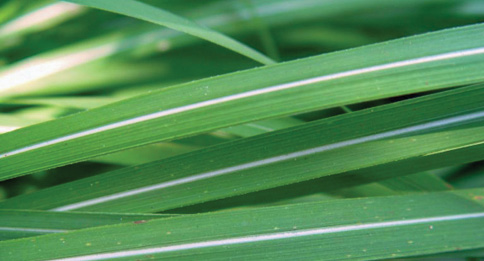

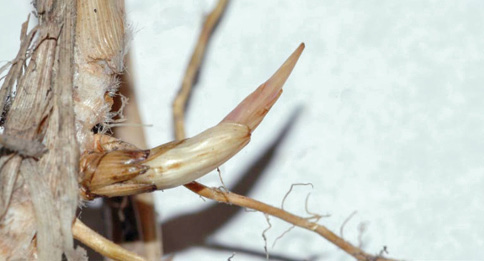
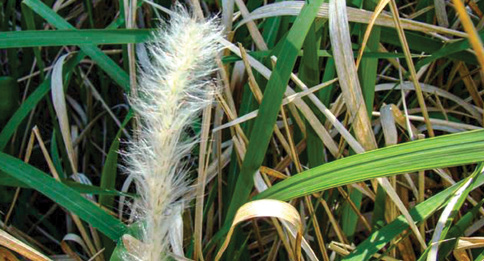
What do I need to know about cogongrass?
Cogongrass is one of the most invasive plants in the world. It is an aggressive, fast-growing grass species that has established throughout the state but is most dense in southern Mississippi.
Though cogongrass was introduced for soil stabilization and forage, animals tend to lose weight rather than gain weight when consuming it. It is a threat to timber stands and protected and endangered wildlife. Its litter is highly flammable, which can lead to wildfires in pastures, rights-of-way, forest stands, and other disturbed areas where it readily establishes and spreads.
How do I identify cogongrass?
- Bright green leaves in spring and summer; straw-colored or silvery-tan leaves in late fall andwinter.
- Leaves are up to 6 feet long and 1 inch wide with serrated margins and off-center midribs, which can vary significantly.
- Leaves arise from underground horizontal stems (rhizomes) that are white, segmented, and covered with reddish-brown scales. Rhizomes are very sharp, so be careful when handling cogongrass specimens.
- Flowers are light maroon before opening, then whitish-silver, fluffy, and 2 to 8 inches long; seeds disperse long and short distances in fluffy, white clumps in the wind from late March to mid-June.
- Leaf collar (ligule) may be hairy with overlapping leaf sheaths, giving a round appearance.
- Plants do not arise from a dense clump, though there may be some thatch around the base.
Cogongrass lookalikes
- Johnsongrass (Sorghum halepense)
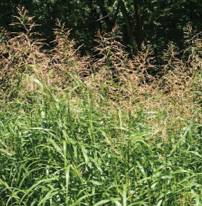
- Pampas grass (Cortaderia selloana)

- Silver beardgrass (Bothriochloa laguroides)
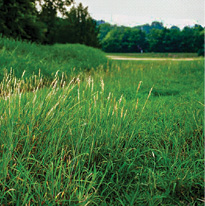
All lookalike photos Bugwood.org: (Top to bottom) Chris Evans, University of Illinois; John Ruter, University of Georgia; Charles T. Bryson, USDA Agricultural Research Service.

If you have walked or driven through an area with cogongrass, clean your shoes, clothing, and equipment of seeds and dislodged rhizomes to prevent spreading it.
What should I do if I find cogongrass?
- Contact the Mississippi Forestry Commission (MFC) area forester in the county you found the cogongrass to report the location.
- Report the location in the Mississippi Invasive Species Tracking App.
- If the cogongrass is on your property, MFC may also assist you with methods to control its spread. For more information, see the MFC Cogongrass Control Program website or email badplants@mfc.ms.gov.
How do I prevent or control cogongrass?
- It is very difficult to prevent and control cogongrass. It is one of the most invasive plants in the world, after all.
- To prevent establishment, avoid soil disturbance, maintain native ground cover, clean equipment before it enters the site, and prevent the spread of contaminated soil.
- Control may be achieved through a two-step process using glyphosate and imazapyr over several years. Since cogongrass likes fire, prescribed burning can stimulate its growth and spread.

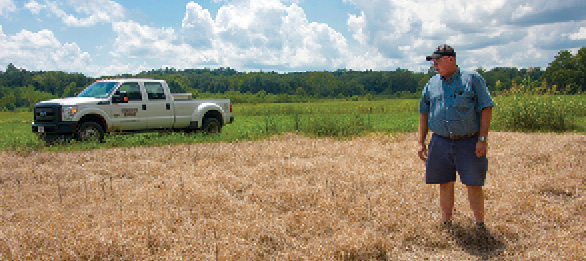
For more information
https://www.cogongrass.org/

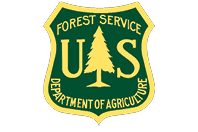

Funding provided by the Bipartisan Infrastructure Law of the U.S. Department of Agriculture Forest Service, Grant Award 23-DG-11083150-102 to the Mississippi State University Department of Forestry. Additional support was provided by the Mississippi Forestry Commission.
Publication 4027 (08-24)
By Ashley Schulz, PhD, Assistant Professor, and A. Brady Self, PhD, Extension Professor, Forestry.
The Mississippi State University Extension Service is working to ensure all web content is accessible to all users. If you need assistance accessing any of our content, please email the webteam or call 662-325-2262.




